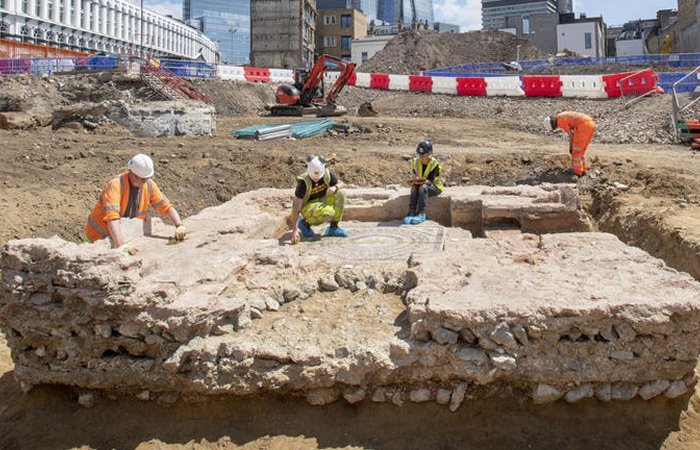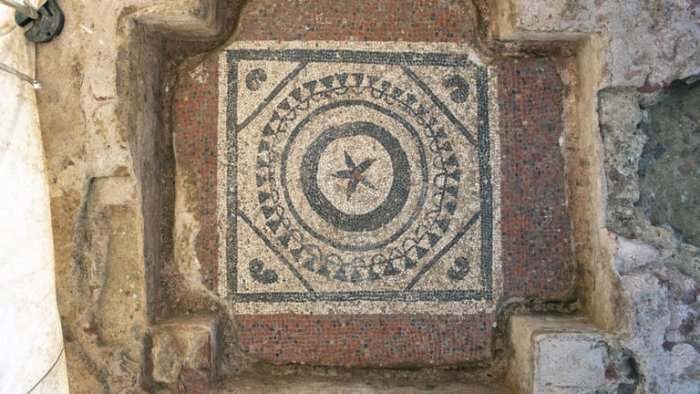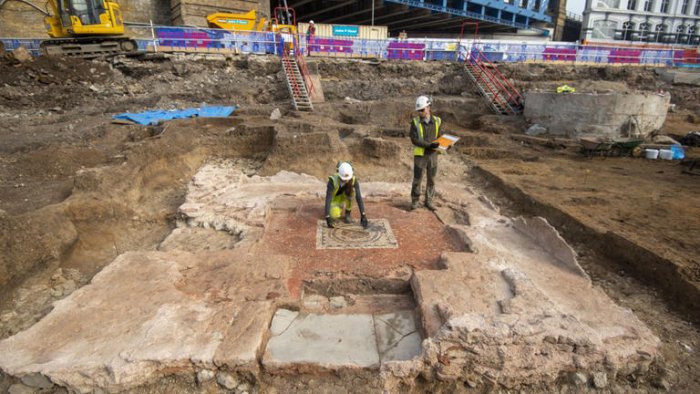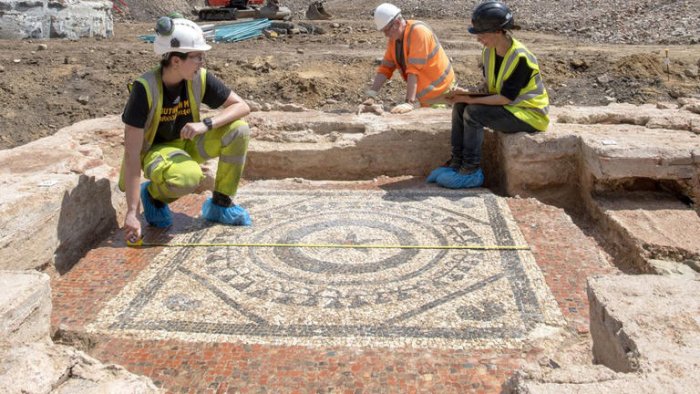Jan Bartek – AncientPages.com – Archaeologists report discovering an “incredibly rare” Roman tomb near London Bridge Station, UK.
Last year, archaeologists found very largest Roman mosaics at the same site, and scientists understood something much bigger might be hidden beneath the ground. Excavations carried out by MOLA archaeologists on behalf of Landsec and Transport for London (TfL), which owns the site, and Southwark council have led to the discovery of something extraordinary. Scientists say they have unearthed the remains of a Roman mausoleum “with an astonishing level of preservation.”

The mausoleum features a mosaic surrounded by a raised platform, which archaeologists believe was for burials © MOLA
It is believed to be the most intact structure of its kind discovered in Britain.
Scientists have “unearthed the walls, entrance steps and interior floors of the tomb. The mosaic at the centre is surrounded by a raised platform on which the burials were placed.
There’s evidence of a second mosaic directly beneath the first, indicating that it was raised during its lifetime. The two mosaics are similar, with a central flower surrounded by concentric circles.
The ‘completely unique’ tomb was probably used as some form of burial ground for wealthier members of society,” the Metro reports.

A second mosaic was found beneath the first, suggesting the floor was raised at some point © MOLA
“Although the tomb was almost completely dismantled, probably during the medieval period, the signs are it was a substantial building, perhaps two storeys high, and would have been used by wealthier Romans, possibly as a family tomb.

The aim is to preserve the area alongside continued urban development. © MOLA
Though no coffins or burial remains were found, more than 100 coins, together with scrap pieces of metal, fragments of pottery and some roofing tiles were discovered. The area surrounding the mausoleum contained more than 80 Roman burials, including copper bracelets, glᴀss beads, coins, pottery and even a bone comb,” the Guardian reports.

The discovery was made at the Liberty of Southwark excavation site © MOLA
“This relatively small site in Southwark is a microcosm for the changing fortunes of Roman London – from the early phase of the site where London expands and the area has lavishly decorated Roman buildings, all the way through to the later Roman period when the settlement shrinks and it becomes a more quiet space where people remember their ᴅᴇᴀᴅ.
See also: More Archaeology News
“It provides a fascinating window into the living conditions and lifestyle of this part of the city in the Roman period,” Antonietta Lerz, senior archaeologist at MOLA, said.
There are plans for the future public display of the mausoleum.
Written by Jan Bartek – AncientPages.com Staff Writer





